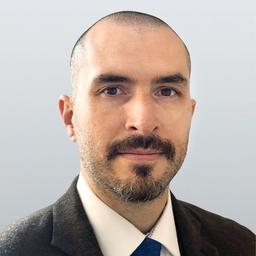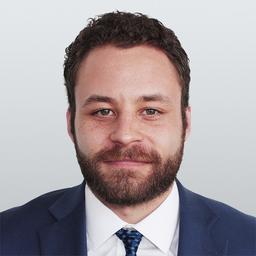Prime Minister Mark Carney brought many new faces into his cabinet on May 13, while at the same time, some of the core ministers of the Justin Trudeau era remain in key roles.
“We need to balance experience and new perspectives,” Carney told reporters on May 13 when asked to explain the rationale behind the formation of his cabinet. “Canadians voted for big change, not small change.”
Keeping the Core
Carney’s front bench will look similar to what Canadians were used to during the latter years of Trudeau’s mandate.Most of the key portfolios have remained in the hands of experienced ministers. Not many ministers kept their roles from Carney’s first cabinet named in March, but those who did are household names.
Dominic LeBlanc will remain involved in managing Canada–U.S. relations. While he won’t serve as international trade minister, he will be responsible for trade with the United States. He also remains minister of intergovernmental affairs and president of the King’s Privy Council.
François-Philippe Champagne was appointed finance minister two months ago and he will remain in that position. He received the additional portfolio of national revenue. Champagne had been a key minister under Trudeau, with his latest role being in charge of industry and innovation.
It is expected that Carney, as a former central banker, will be closely involved in managing the country’s finances.
Carney had removed Steven Guilbeault from the environment file in March and put him in charge of a rejigged heritage portfolio. Guilbeault stays in this role, called the Minister of Canadian Identity and Culture, and will also oversee official languages.
Another well-known minister who has kept her responsibilities since the last shuffle is Chrystia Freeland. She stays as minister of transport and internal trade. She was previously finance minister and deputy prime minister under Trudeau, until she quit and set off the chain of events leading to Trudeau’s resignation.
Some senior ministers have remained in cabinet but have exchanged duties. Mélanie Joly moved to industry from foreign affairs, while Anita Anand took her former role. Anand has had several different high-level roles in recent years, including defence minister and Treasury Board president. She initially announced she would not seek re-election but later said Carney and Canadians who communicated with her changed her mind.
Another who changed his mind about leaving federal politics and who makes a return to cabinet is Sean Fraser. After handling the thorny immigration and housing files under Trudeau, Fraser has been named justice minister and attorney general by Carney.
Star Candidates Rewarded
The Liberal Party had a number of star candidates on their election ticket, and several of those who were successful have been appointed to cabinet.Some of them have also landed relatively senior roles given the focus Carney has said he has on affordability and growing Canada’s economy.
Carney said he had entered politics to help deal with the cost of living and housing crises. His electoral platform made some ambitious pledges on housing, such as almost doubling the pace of new constructions to 500,000 a year.
The minister who will oversee the housing file is former Vancouver Mayor Gregor Robertson, who served between 2008 and 2018.
Tim Hodgson, the former chair of utilities company Hydro One, is also going to the House of Commons as an MP. He will serve in Carney’s cabinet as minister of energy and natural resources.
Carney ran a campaign heavily focused on building Canada’s economy by speeding up resources projects approval and creating an East-West electricity grid. Hodgson is well-known to Carney, with the two being former colleagues at investment bank Goldman Sachs. Hodgson also served as special adviser to Carney when he was governor of the Bank of Canada.
Another close personality to Carney getting a cabinet post is former broadcaster Evan Solomon, who was elected in a Toronto riding. Solomon had been fired by CBC for brokering art deals with clients he interviewed in his capacity as a journalist, including Carney.
Provincial Representation
Carney has kept Trudeau’s practice of naming a gender-balanced cabinet. He has also managed to have all provinces be represented by a minister or secretary of state. This was made possible by the Liberals gaining a lone seat in Saskatchewan. Newly elected MP Buckley Belanger will serve as secretary of state for rural development.One of the territories will also be represented in cabinet with the appointment of Rebecca Alty as minister of Crown-indigenous relations. Alty is the lone MP representing the Northwest Territories. Brendan Hanley is the Liberal MP representing the Yukon since 2021 but he has never served in cabinet.
Carney’s new cabinet is heavy on ministers in the population-rich provinces where the Liberals did well in the April 28 election. Liberals won 70 seats in Ontario, 44 in Quebec, and 20 in B.C. The cabinet has a total of 11 ministers and three secretaries of state from Ontario, seven ministers and two secretaries from Quebec, and two ministers and three secretaries from British Columbia.
Liberals won two seats in Alberta, and one of the newly elected MPs, Eleanor Olszewski, will serve as minister of emergency management.
Carney’s first cabinet he put together on March 14, which had 24 ministers including himself, did not have any ministers from Alberta. Carney responded to a question about this absence by saying that he was originally from Alberta, as was cabinet minister Chrystia Freeland.
Liberals again only had two MPs from the province at the time including former cabinet minister Randy Boissonneault, who had been dropped from cabinet due to controversies around a company he used to co-own, and George Chahal. Boissoneault didn’t run in this election and Chahal was defeated in Calgary.
Liberals won six seats in Manitoba, but only newly elected Rebecca Chartrand got the call from Carney. She will serve as minister of northern and Arctic affairs.
New Brunswick will be represented by LeBlanc and Wayne Long.
Nova Scotia will be represented by two ministers, including Fraser and Lena Metlege Diab who will handle immigration.
Junior Ministers
Alongside ministers, Carney appointed MPs in the roles of secretaries of state. Those are junior positions that will support cabinet. Secretaries of state were utilized by the Jean Chrétien, Paul Martin, and Stephen Harper governments, but had not existed under Trudeau.These ten new positions are considered junior to ministers of state, and thus they will not participate in all cabinet meetings and decisions. According to the Prime Minister’s Office, these secretaries of state will only participate in meetings when their files are being discussed.
Nathalie Provost, a survivor of the École Polytechnique mass shooting and a gun control advocate, has been given the position of secretary of state for nature.
Stephen Fuhr, who served 20 years in the Royal Canadian Air Force before joining the civilian aviation industry and becoming the CEO of SkyTrac Systems, will serve in a secretary of state role for defence procurement after being elected in April.
Anna Gainey, who was previously president of the Liberal Party of Canada from 2014 to 2017, will be secretary of state for children and youth. Wayne Long, a long-time MP who publicly called for Trudeau’s ouster toward the end of his leadership, will become the secretary of state in charge of the Canada Revenue Agency and financial institutions.
Other secretaries of state include John Zerucelli as secretary of state for labour, Buckley Belanger as secretary of state for rural development, Randeep Sarai as secretary of state for international development, and Stephanie McLean as secretary of state for seniors.
Additionally, Rechie Valdez was given the position of minister of women and gender equality, as well as a secretary of state position for small business and tourism.
Out of Cabinet
While many ministers remained in government but had their files switched, some ministers did not make it back into cabinet at all.Jonathan Wilkinson, who had been minister of energy and natural resources since 2021, is one of the former ministers who was left out of cabinet. Wilkinson previously served as minister of fisheries, oceans and the Canadian Coast Guard from 2018 to 2019, and minister of environment and climate change from 2019 to 2021.
Nathaniel Erskine-Smith, who had been brought on as minister of housing, infrastructure and communities in December 2024 by Trudeau, was one of the ministers dropped by Carney. Erskine-Smith said on X that it had been a “strange day” and it was “impossible not to feel disrespected and the way it played out doesn’t sit right.”
Erskine-Smith had said in 2024 that he is not planning to run in the next federal election, but changed his mind after Trudeau appointed him to cabinet. He had retained his position after Carney announced his first cabinet on March 14 upon being sworn in as prime minister after Trudeau’s resignation.
Erskine-Smith said he was disappointed that his team would not have the chance to “build on all we accomplished with only a short runway,” but that he wished Carney and his cabinet “all of the success.”
Carney also removed from cabinet several MPs that he had only brought in on March 14, including Immigration Minister Rachel Bendayan; Minister of Agriculture Kody Blois, Minister of Public Services and Procurement Ali Ehsassi; and Government House Leader Arielle Kayabaga.
One of the most high-profile ministers not to return was Bill Blair, who had been a cabinet minister since 2017. Prior to that, Blair spent four decades with the Toronto Police Service, including as its chief of police from 2005 until 2015.
Blair was minister of border security and organized crime reduction from 2017, became minister of public safety and emergency preparedness in 2018, was reduced to minister of emergency preparedness when public safety went to Marco Mendicino in 2021, and became minister of national defence in 2023.
Terry Duguid had also served as the minister of sport and minister responsible for economic development in the prairies, before Carney made him minister of environment and climate change in March. However, he was dropped from the cabinet.
Other MPs removed from cabinet positions included Veterans Affairs Minister Élisabeth Brière and Treasury Board President Ginette Petitpas Taylor. Kamal Khera, who served as minister of seniors under Trudeau before becoming Carney’s minister of health in March, failed to win her seat in the April election.








